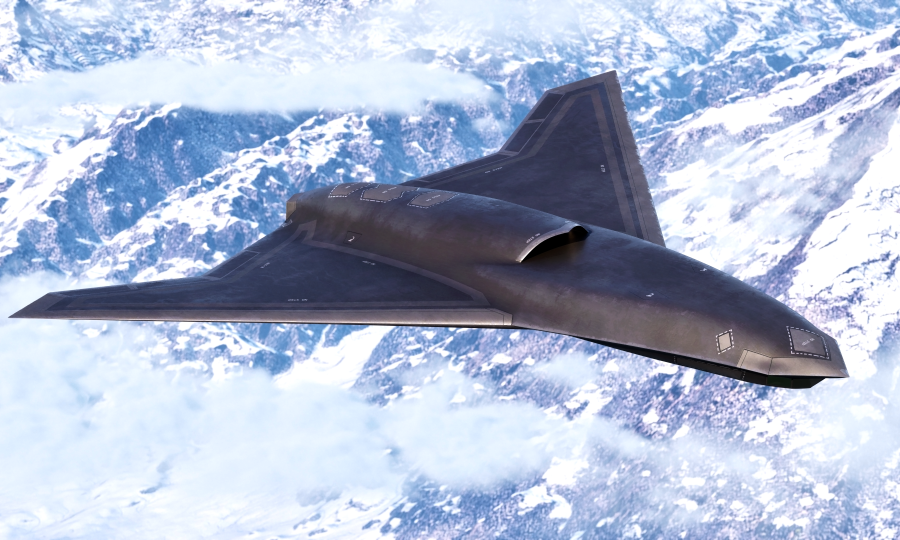Lockheed Martin unveiled a new autonomous drone called “Vectis,” which the company’s Skunk Works advanced products division thinks is the right-sized platform to partner with both Air Force and Navy crewed combat aircraft.
“Skunk Works is charting a critical path with this Vectis program to unlock new, integrated capabilities at an ultra-competitive speed and price point,” Skunk Works president OJ Sanchez told reporters in a Sept. 16 briefing. He did not elaborate on what the unit cost of Vectis might be.
The new jet will fly within two years, and while it is not necessarily aimed at Increment 2 of the Air Force’s Collaborative Combat Aircraft program, it would be a “great candidate” for it, Sanchez said.
Like the drones selected for Increment 1 of the CCA program, Vectis is “Group 5” unmanned aerial system, classified as any aircraft that weighs more than 1,320 pounds and normally flies above 18,000 feet. Sanchez described the system as somewhere in size between Lockheed’s new Common Multi-Mission Truck cruise missile and an F-16.
He declined to say what powerplant Vectis will carry but did say the drone will be able to keep up with fifth-gen fighters, although “our operational analysis doesn’t point towards supersonic” capability. The signature and communications capabilities of Vectis are “compatible with fifth- and next-gen aircraft,” he added.
“We’ve conducted classified crewed/uncrewed teaming and operations analysis, pairing F-22s and F-35s with Vectis, and the results are impressive,” Sanchez claimed. It will be rapidly upgradeable and customizable.
“Our work is also in complete alignment with U.S. government reference architectures for both autonomy and mission systems,” he added. “Agreement on these approaches between the services means integration and interoperability can happen across all domains. Again, this isn’t about connecting Lockheed Martin systems with Lockheed Martin systems. We can connect back to any other platform.”
Artist concepts of the Vectis released by Lockheed shows a lambda delta-wing craft with a dorsal air intake. An accompanying video shows a single F-22 managing four Vectis craft, which fly ahead of the jet, detect enemy aerial targets, and shoot missiles at them at the command of the F-22 pilot.
The Air Force has not publicly revealed its plans for CCA Increment 2, leaving open the possibilities that the service may want aircraft that are even lower-cost and less sophisticated than Increment 1—in development by Anduril Industries and General Atomics Aeronautical Systems—or a more complex platform able to perform more missions with higher survivability.
Lockheed was not successful in competing for Increment 1, reportedly because it offered a drone more capable than what the Air Force wanted. Likewise, the firm was not selected for either the Air Force or Navy next-generation air dominance fighter programs, but Sanchez said the knowledge obtained when “we built and flew a sixth-gen aircraft” for the NGAD program “is driving progress across current and emerging efforts.”
The Vectis builds on Skunk Works’ long history with cutting-edge crewed and uncrewed aircraft, as well as a focus on “a purposeful path to driving progress in connecting multi-domain systems through ongoing experimentation conducted intensely for more than 15 years,” Sanchez said. This connectivity “sets our efforts apart” from other autonomous aircraft approaches, he asserted.
Sanchez described Vectis as “survivable, lethal, and reusable,” with advanced autonomy that meets government standards. It will be runway-based, but with an eye toward high reliability and small-footprint field maintenance, to align with the Air Force’s agile combat employment model of operating from widely dispersed, potentially austere locations. High reliability and ease of maintenance will be “baked in,” and Lockheed can customize the aircraft to either be a “daily flyer” or a boxed system that can be unpacked and flown as needed
The analysis leading to Vectis—Latin for “lever,” but also suggesting “Vector”—has been underway for some time, he said.
Skunk Works said the vehicle grew out of “our own analysis, and then, in partnership, listening to the U.S. Air Force, the U.S. Navy and our international partners … to what their requirements are.” The jet is aimed at “no specific competition,” but it should be “very attractive to multiple mission problem sets,” and its payload can be “tailored towards specific countries or programs as they need,” Sanchez said.
“Vectis will provide U.S. and allied warfighters with range, endurance, and multi-mission flexibility, including air-to-air, air-to-surface, and [intelligence, surveillance and reconnaissance] as the future of airpower takes shape,” Sanchez said.


